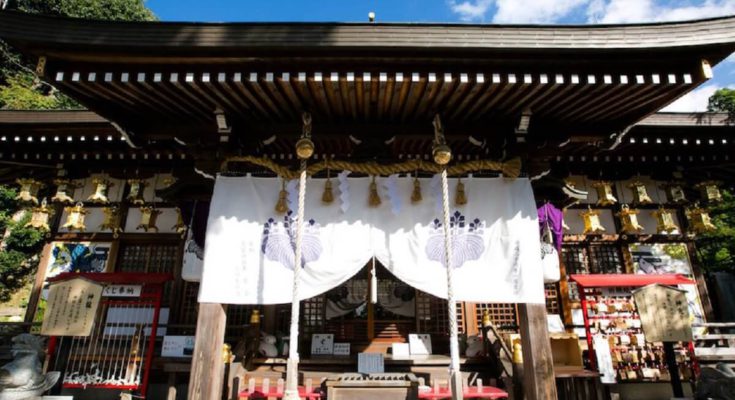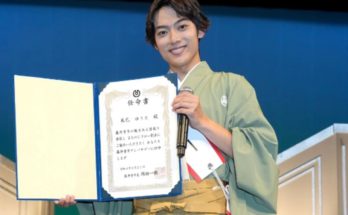Welcome to Shinto shrines introduction page!! This is a page of Shinto shrines introduced by me, a Shinto priest.
This time, I am going to talk about Onji Jinja, one of the oldest Shinto shrines in Osaka. It may not be so famous today, but in the Nara period (710-794), there were eight major Shinto shrines in Japan, and Onji Jinja was one of them. I would like to introduce the history of Onji Jinja.

1. About Onji Jinja
Onji Jinja is a grand Shinto shrine of purification where the divine rabbit and the divine dragon, messengers of the kami, lead you to good fortune. This Shinto shrine was founded over 1,500 years ago, and many people have prayed various wishes to the kami here.
Praying and thanking the kami means facing your own heart.
There is an ancient belief in the purifying of Hitogata, and the kami purifies people from all sins and impurities and protects them, giving them an affluent and happy life. Also, when Jingu Kougou went to the continent to fight, the kami of this Shinto shrine, together with the kami of Sumiyoshi Taisha, protected the safety of the land and sea routes. Therefore, the Shinto shrine is worshiped as kami that can grant people travel safety, traffic safety, and good matchmaking.

2. Histoy
It is said that the shrine was founded in the Yuryaku era (around 470) of the Yamato period. It is one of the oldest shrines in Japan, enshrined for the protection of the Kawachi region.
Many people have lived in this area since the Stone Age, and there are traces of their worship toward the mountain to the east, where the sun rises; even the Onji mountain itself was a deity. In addition, the “Ryou-no-syuge” which describes important shrines and shrine matters before the mid-Heian period, lists eight of Japan’s ancient Shinto shrines that were especially revered by the imperial court as Shinto shrines of high rank, indicating that Onji Jinja was one of the most important Shinto shrines in Japan during the Nara period (710-794).
This Jinja is one of Myojin-Taisha in the Engishiki, which is an old Japanese book.
After this Jinja was rebuilt by the Fujiwara clan in the Nara period (around 760), the ancestral kami of the Fujiwara clan, Amenokoyane-Mikoto, was transferred from the present Katori Jingu in Hitachi Province, and the Jinja was built as a Subsidiary Jinja. Later, in around 770, the kami was enshrined in Nara (Kasuga Taisha) via Hiraoka (Hiraoka Jinja). This is the reason why this Jinja is called Moto-Kasuga. Also, when Jingu Kougou went to the continent to fight, the kami of this Jinja, together with the kami of Sumiyoshi Taisha, protected the safety of the land and sea routes, and acted as her spearhead or rear guard. Since then, this Jinja has been highly revered by the Imperial Court, and the Tennou has visited here on numerous occasions to pray.
In April 994, Ichijo Tennou sent the Nakatomi clan as an envoy to pray for protection from plague and other misfortunes. This is said to be the beginning of the purification ritual, the summer festival, at this Jinja.
Also, this Jinja was originally built in Tennou-no-mori, but about 700 years ago, when Sakon Onchi built Onchi Castle, the Jinja was moved to its current location on Onji Mountain because it was considered impolite to have it above the Jinja.

3. About the “Hitogata” as a substitute
As a traditional ritual that has continued for more than 1,000 years, we offer “Hitogata Kyosen” to the kami as a substitute for worshippers to get rid of sins, stains, disasters, and bad luck.
For prayers to get rid of bad luck in a bad year, the sins, stains and disasters are transferred to the “Migawari-no-Hitogata” instead of the “Hitogata Kyosen” and are offered before the kami to pray for good health for a year. This is the reason for the traditional purification of Hitogata, and many people visit Onji Jinja to pray for good health and to get rid of bad luck.

4. The rabbit and the dragon
This shrine has stone statues of a rabbit leading to good matchmaking and a dragon leading to happiness. In front of the main sanctuary, there are two rabbits, one male and one female, which will bring you good luck if you stroke them. And in front of the prayer hall, which is used for annual rituals, including the summer ceremony, and for worshippers to pray, there is the dragon. Please pray for happiness by stroking the divine seal held by the divine dragon.

HP : http://www.onji.or.jp
Instagram : https://www.instagram.com/onji_jinja/
Facebook : https://www.facebook.com/onjishrine/
Twitter : https://twitter.com/onji_shrine
Shinto priest at Onji jinja. I live in Osaka with my wife and daughter. I was a science teacher at a junior high school until ten years ago, so I’m thinking about the role of Shinto shrines scientifically.





 HTJ has a YouTube page! Check it out
HTJ has a YouTube page! Check it out